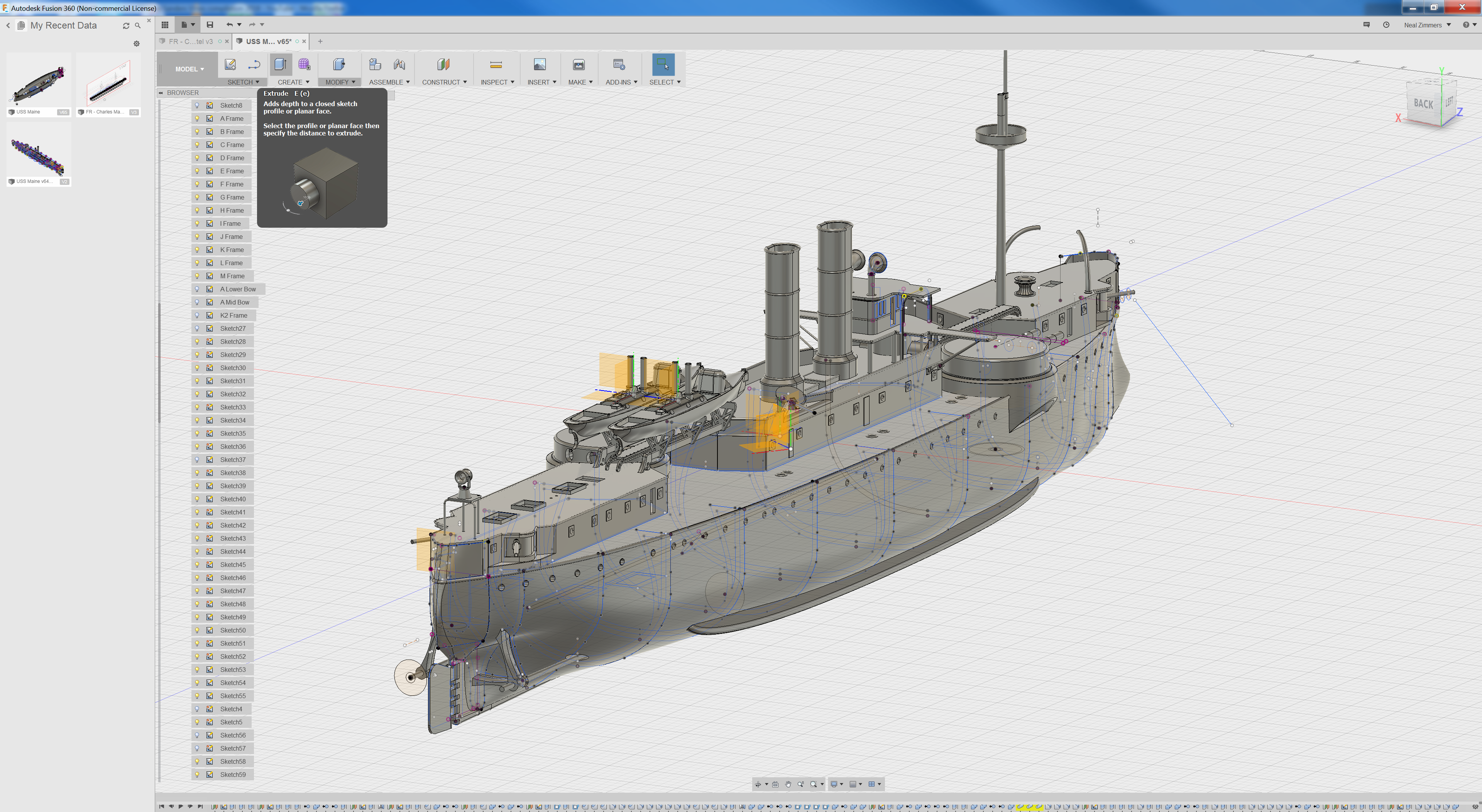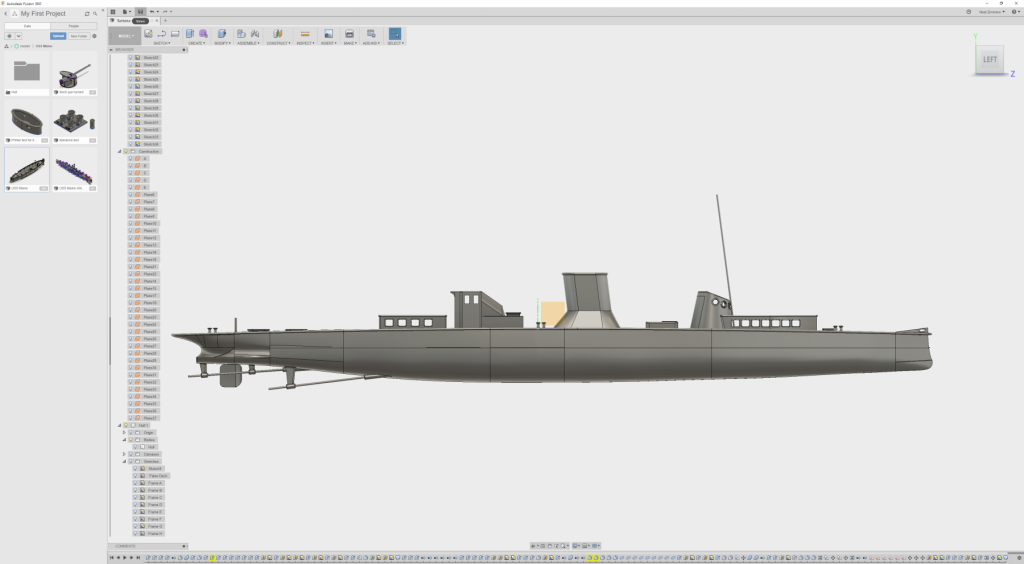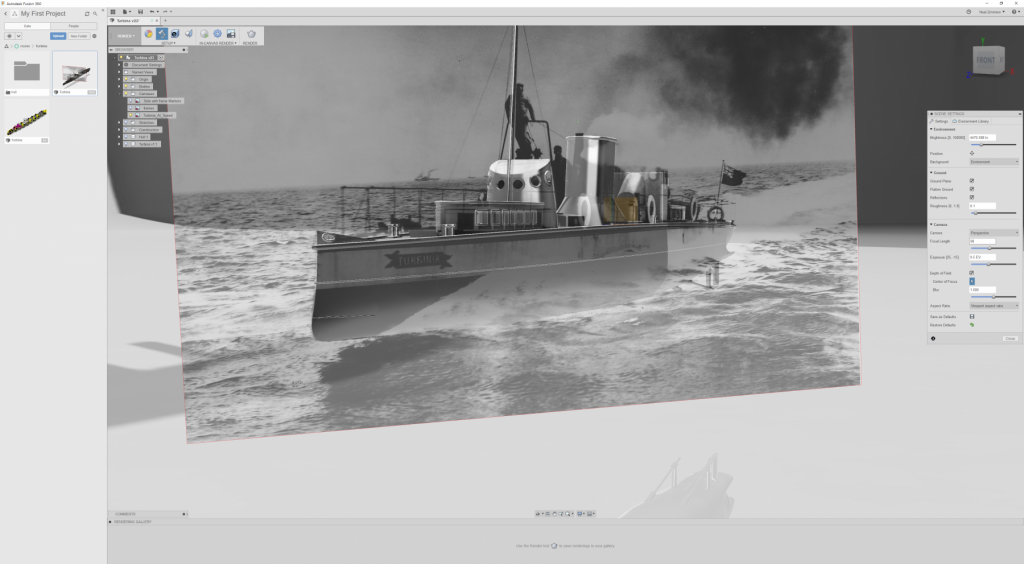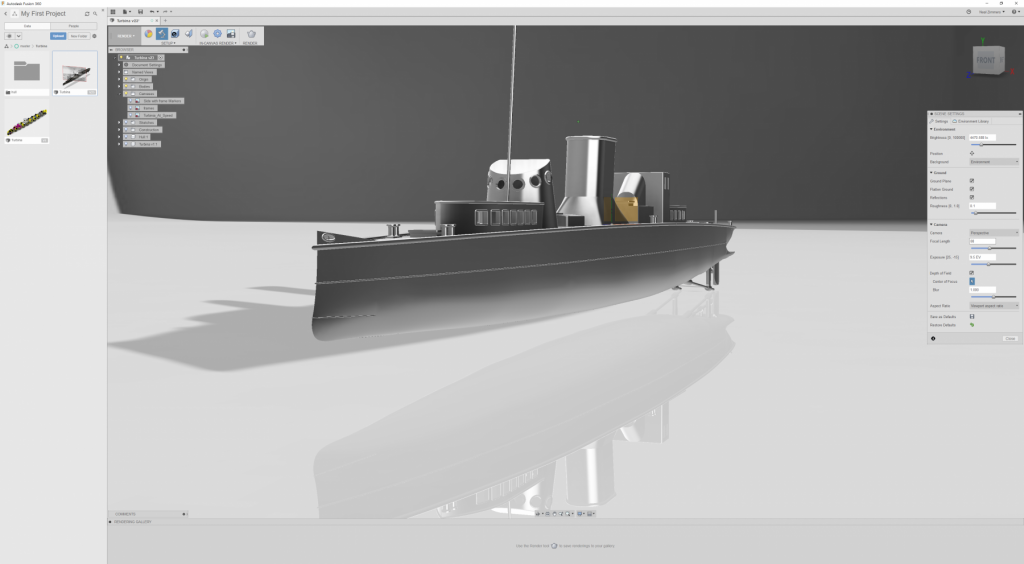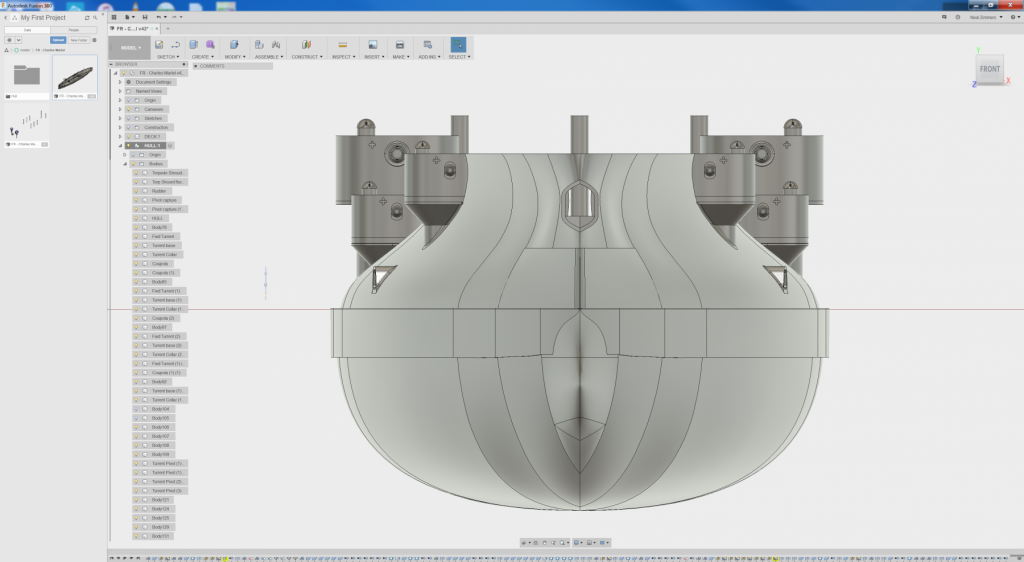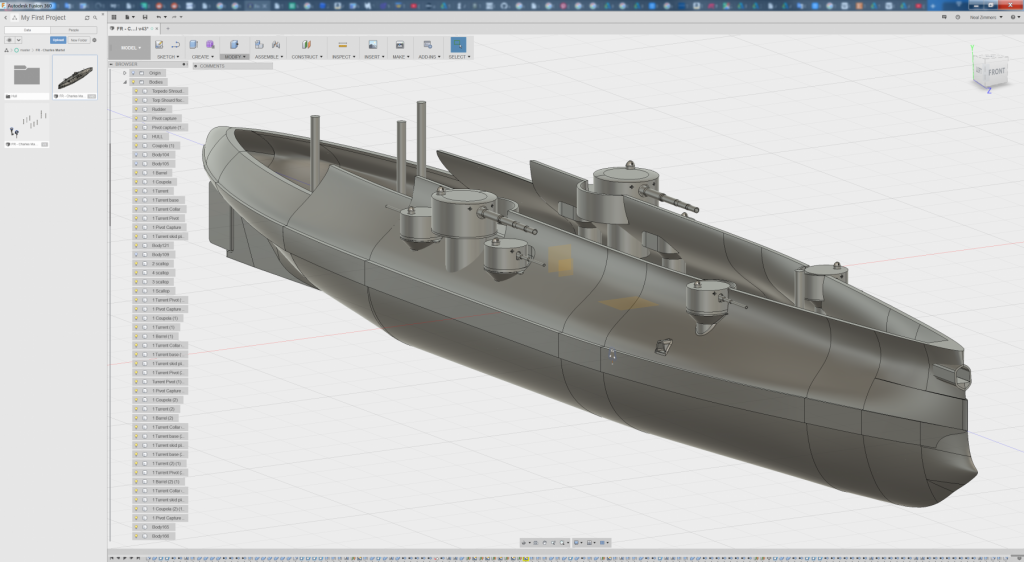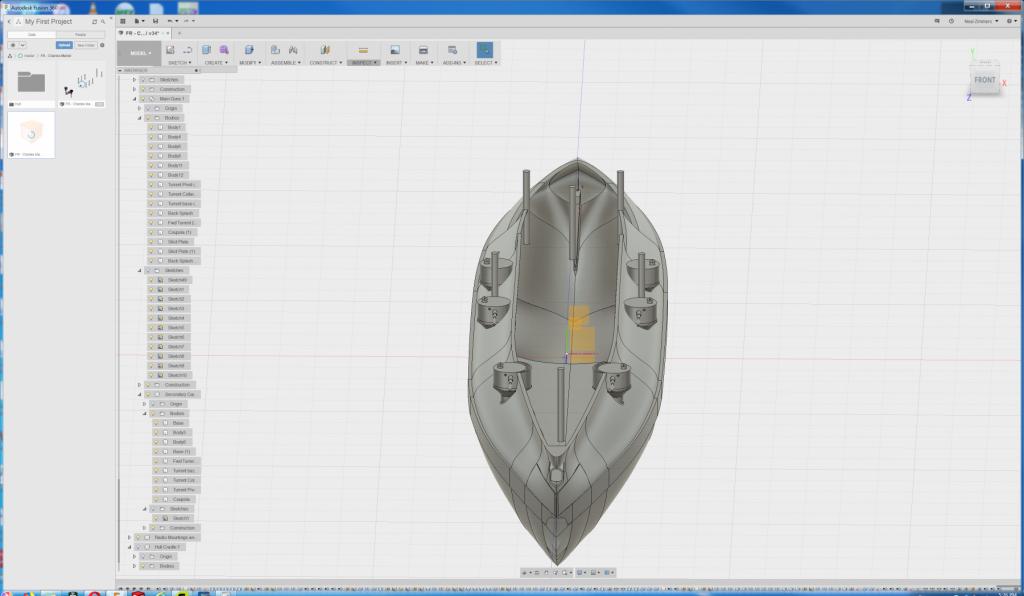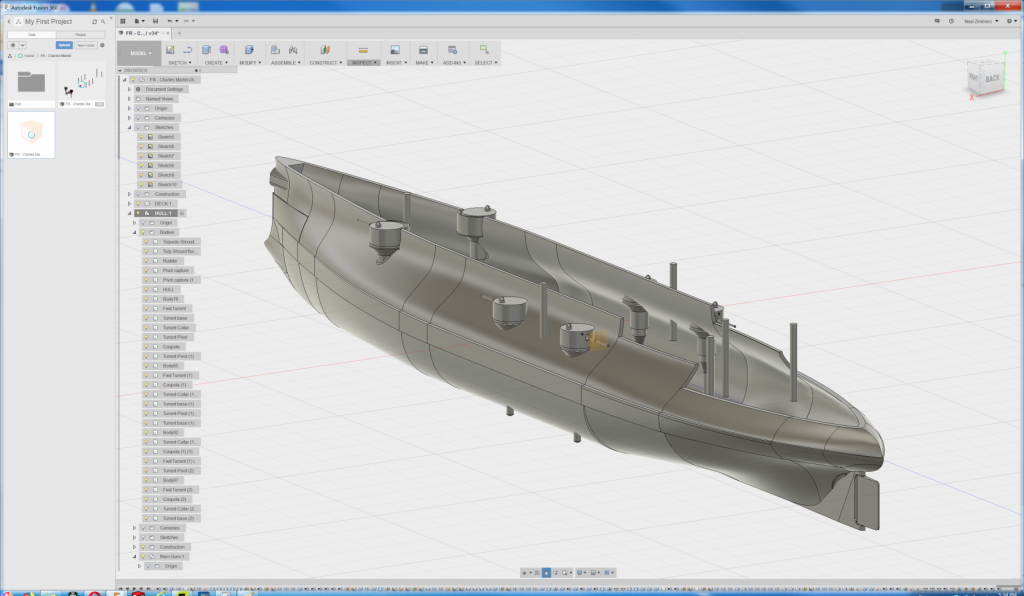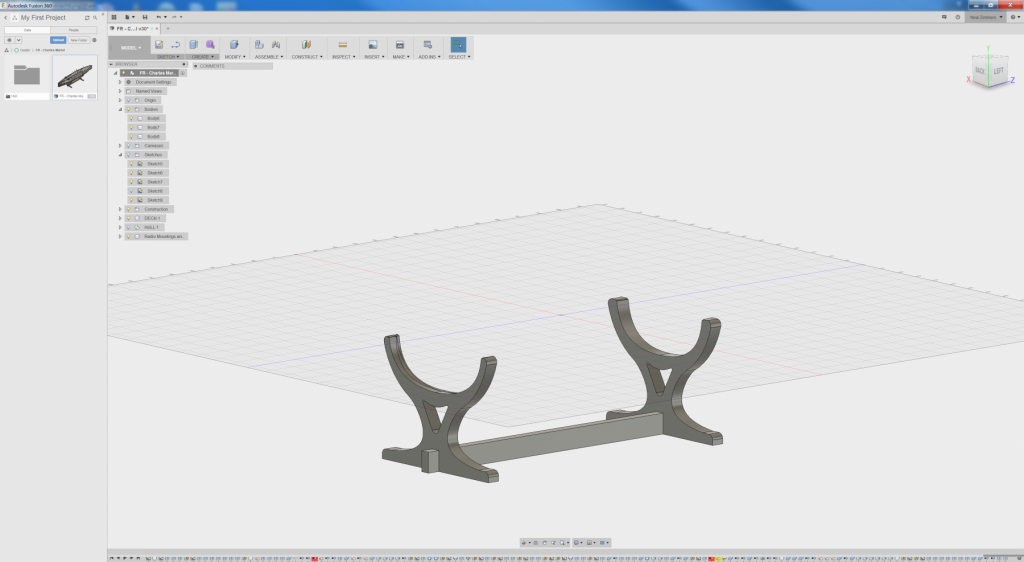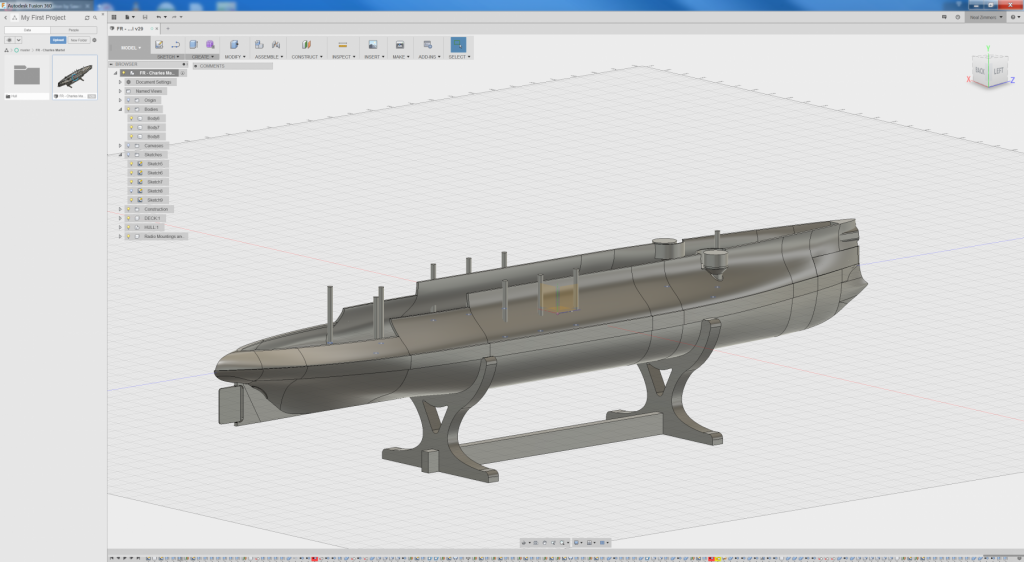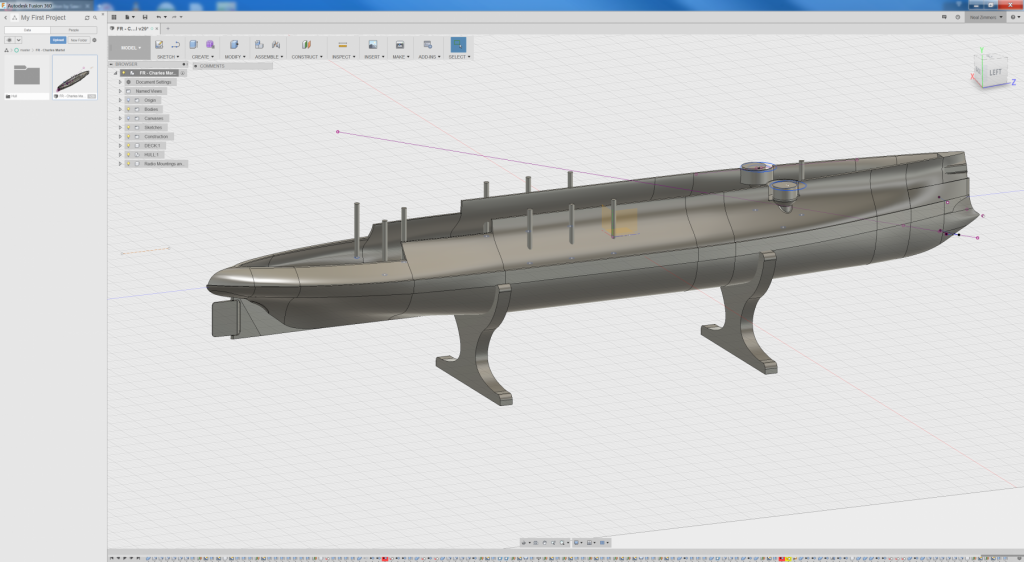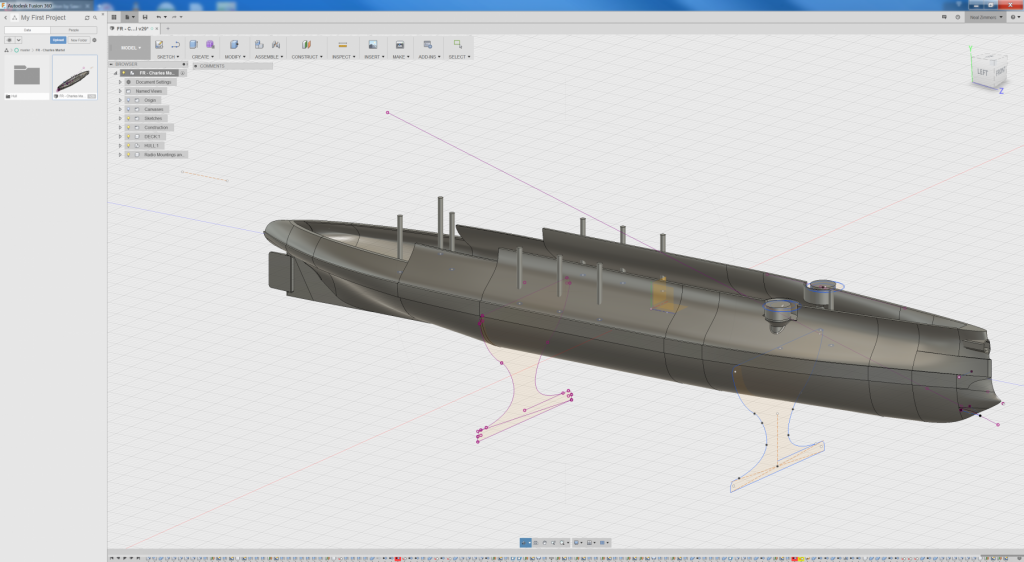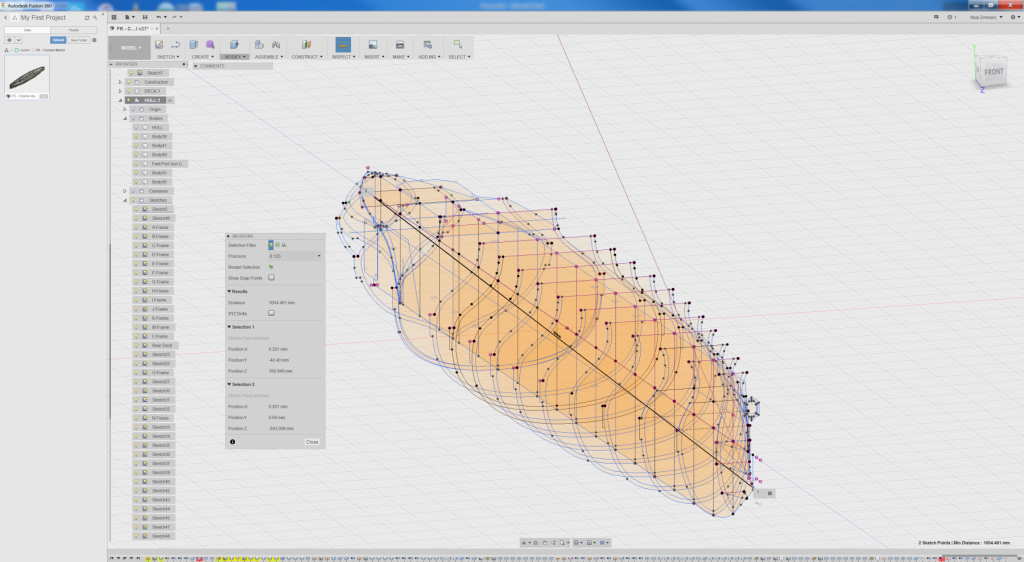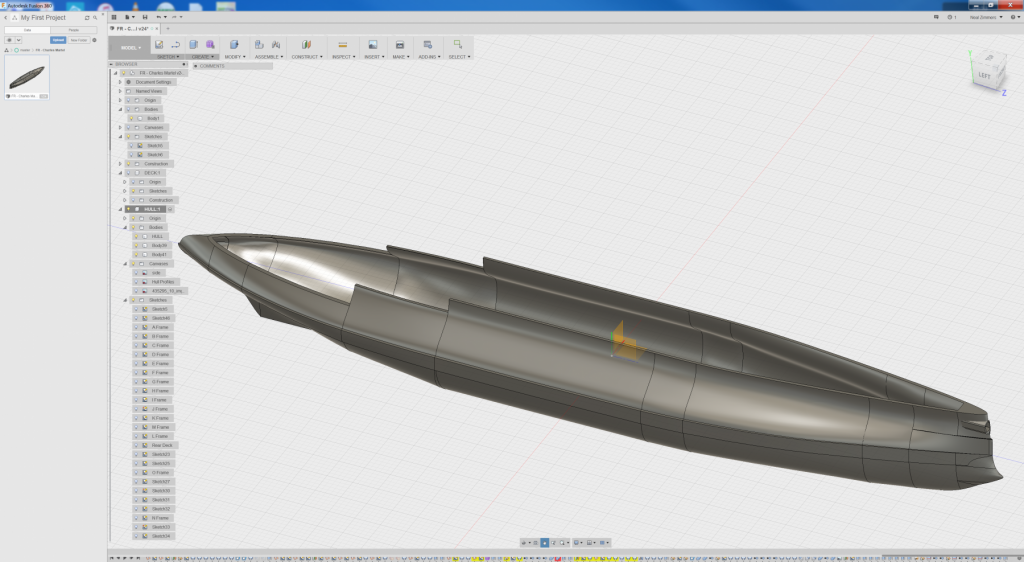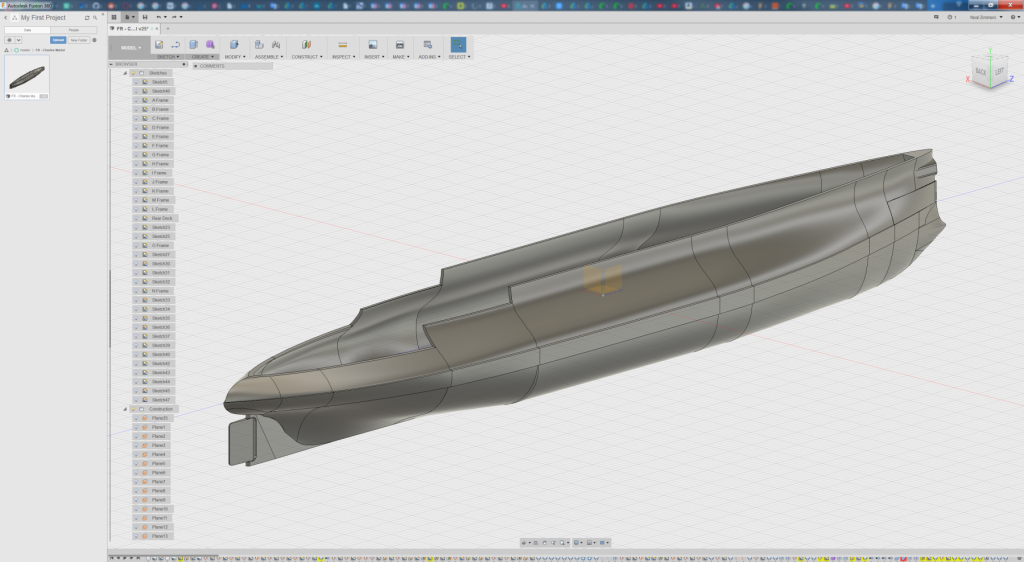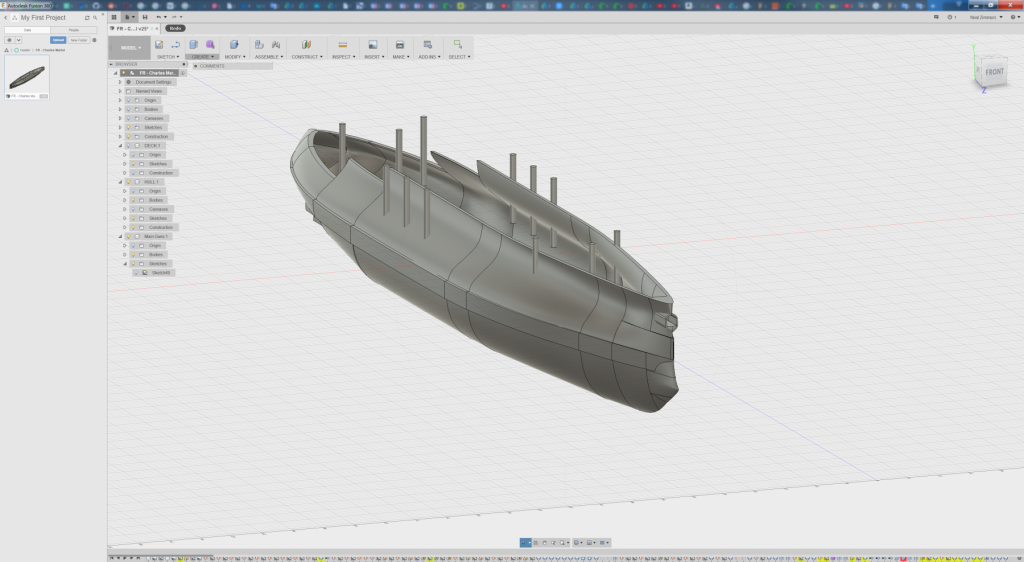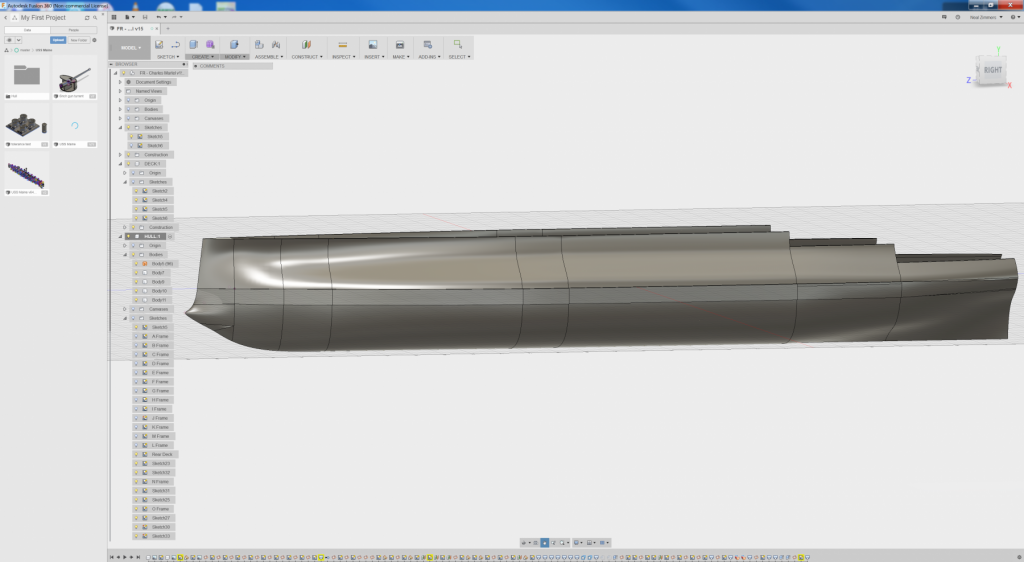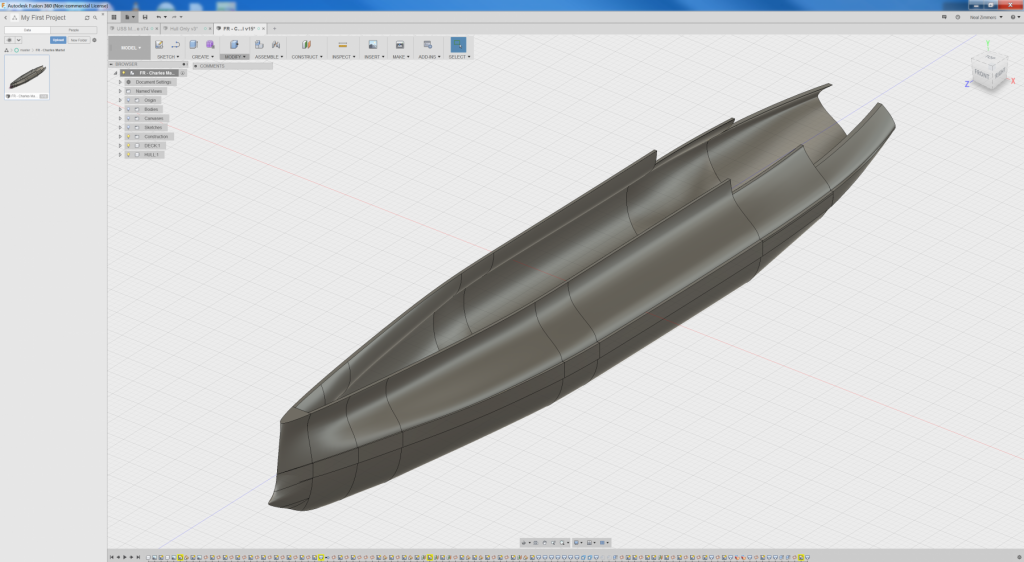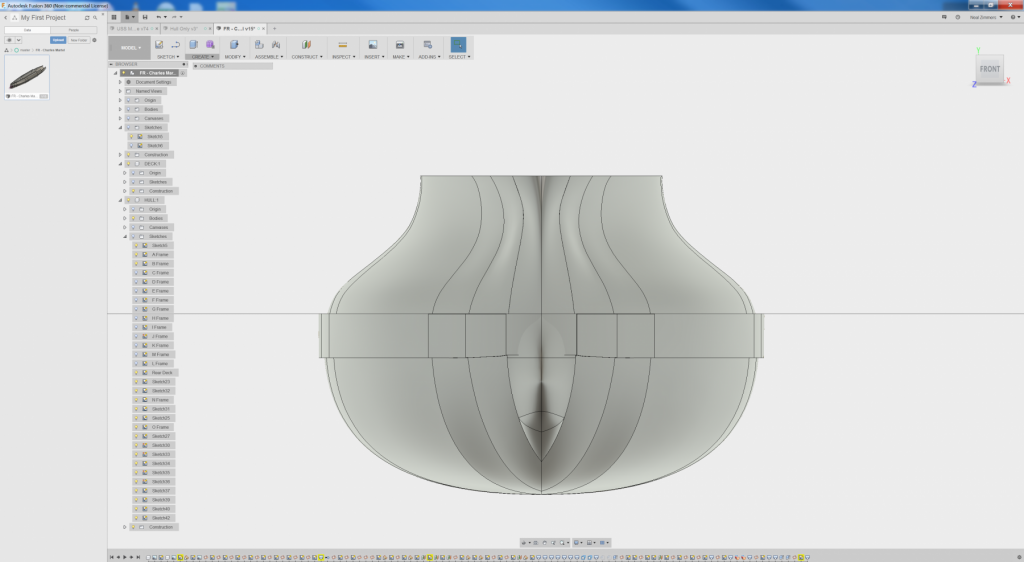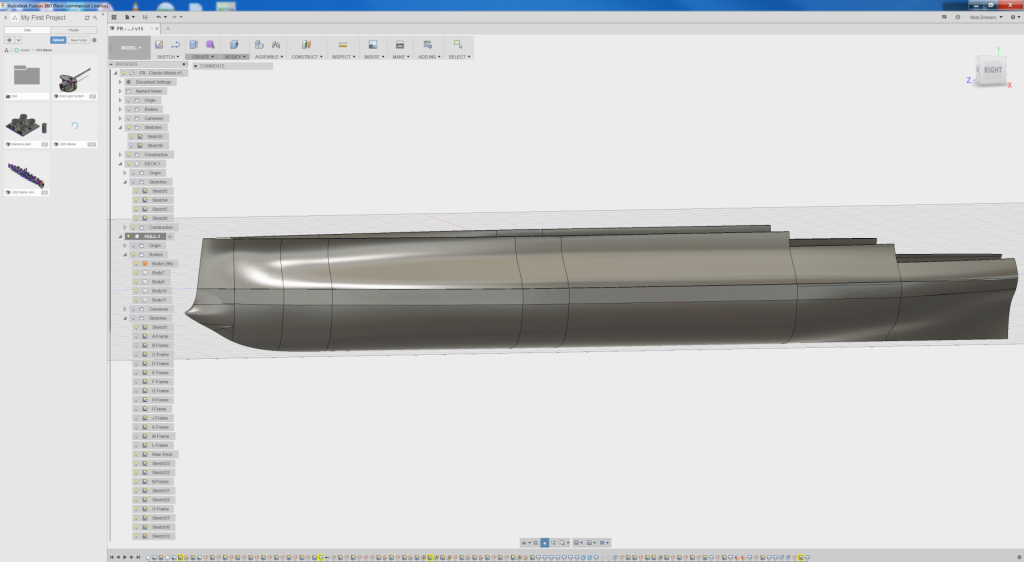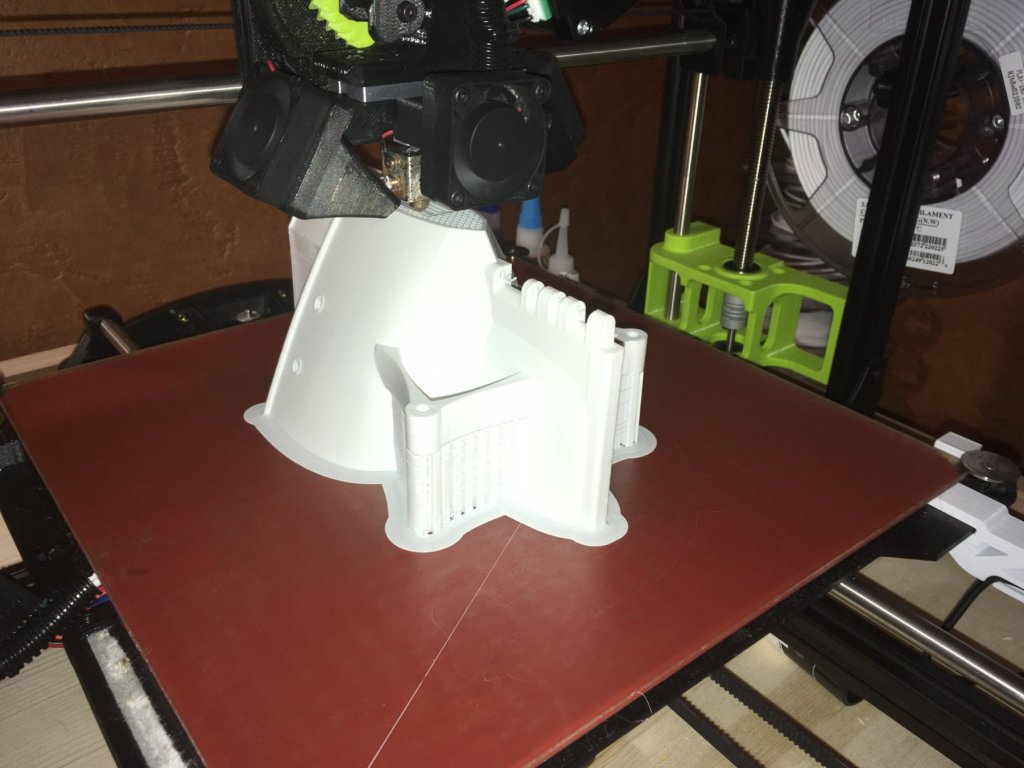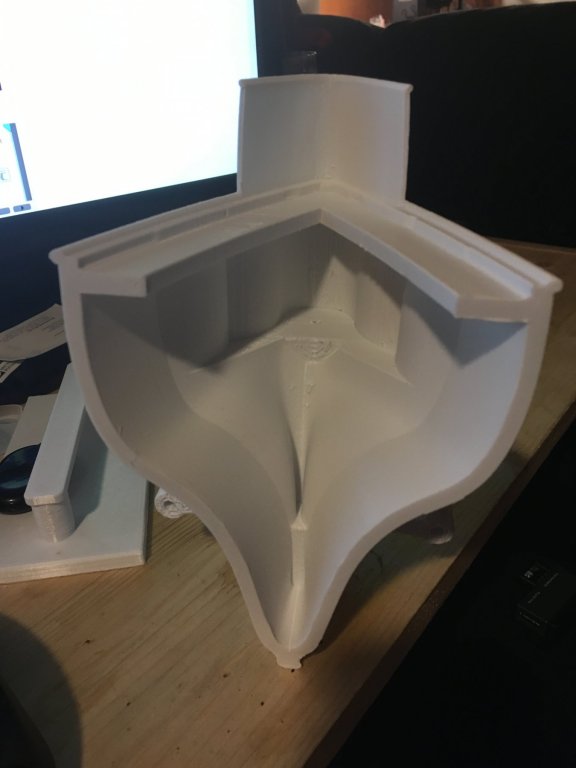-
Posts
223 -
Joined
-
Last visited
Content Type
Profiles
Forums
Gallery
Events
Everything posted by Haze Gray
-
Hi CDW what kind of printer did you get? I had to learn the hard way that if you want to remove a stubborn part *heat up the bed* to 60+ celcius, also don't hammer away at it with a removal tool from the side - (if you have a bed plate that you can remove that's great too and I hear putting it in the feezer works) but forcing the part off while the plate is in the printer absolutely will wear out/deform the synthetic bushings almost immediately. physically treat the printer like a precision instrument as much as possible. Heating the bed a bit helps if you can't remove it I finally figured out how to remove boat hulls properly - you simply squeeze the sides of the hull inwards and with *zero stress* to the printer, the part pops right off! (note this method won't work with submarine hulls as they hull all the way round in 360°) And......if you Are interested in printing a boat well..... I've got one that's pretty close to being done, has under 20 parts which is waaaaaay fewer parts than the battleships! ((compared to 200+ for the USS Maine)....... It is my pleasure and honor to present to you.... Turbinia !!(the world's first steam turbine driven boat! And, it was un-catchable when it debuted (well, actually, crashed the party) at the Queens Naval review in 1884. <Wikipedia Article>
-
More work done last night - lots of tweaking required (and probably a little more to do) but thanks two key photos I was able to get some satisfactory work done on the mid-beam heavy gun turrets. I'm struggling to find a photo good enough to properly guide the porthole placement but that will be coming after I get the last 4 turrets in. Part of me is toying with the idea of motorizing (is that a word?) of the portholes to open and close - could be done but would need to likely use a flexible carbon fiber rod that could follow the contours of the hull - haven't quite worked it out but I have an idea of how it could be done, just not refined enough. Anyways - included a picture of the "business end" of the Charles Martel along with a shot of the interior components - very motivating! By the way, the small notches near the waterline under the most forward turrets on either side are ports for the torpedoes!
- 132 replies
-
- charles martel
- battleship
-
(and 1 more)
Tagged with:
-
Started working on the guns - going well considering I only have photos to work from - still need to work in details on the back of the turrents (hatches) and other stuff, but not alot of great photos out there, some are good but....but I'll take what I can get - it's amazing that there are as many photos as there are considering it was about 120 years ago! Oh by the way, some learning from time spent working on the USS Maine: Hull first, place all the guns and pivot points and gears, put in the motors, mounts, and shafts, servo pockets and battery compartments, and then work out where you can put servo and linkages for the turret tramming! (at least that's my current theory on the sequence)
- 132 replies
-
- charles martel
- battleship
-
(and 1 more)
Tagged with:
-
Hello All - another photo showing 4 of 9 sections completed. I'm going to switch to a .5mm nozzle and see how that affects the print time and quality. As I've been printing I've noticed issues that I'm going to correct for when I re-slice the hull. When I originally sliced the hull I was somewhat purposefully kind of randomly slicing (so I didn't avoid slicing through portholes for example). Here's some lessons learned thus far: a) I went with an atypical thinner hull wall thickness (5mm) so on really tall hull sections (over 175mm tall) there's some noticeable shrinkage so the hull sections are pulled in towards the center about 1-2mm. It's not bad but I'm probably going to re-slice for sections in the 125mm to 150mm range to minimize this. b). I'm going to put in either 3 or 4 tabs to join sections using thin nut and bolts - this will help accurate with alignment c) I'm going to slice to reduce the need for infill support - basically because some of the surfaces that need to be mated to parts (like the cut-out for the turrents) have edges that need to be properly printed to keep the post labor count low (e.g. as little sanding as possible). d) The piping around the portholes look great, but if the layering on the hull can't be smoothed out with primer and paint and sanding is needed the port holes will get in the way of that - I might have to remove them. I'll know more this weekend when I try painting one of the hull sections. e) PETG might also be a good material to try, I never tried it for something this big but it's a much more stable material and I think it flows just as well if not better than some PLA's so will give that a go at some point and see if I should look harder for a material that gives superior results when it comes to hulls. What I use now works well, but I think there may be something better out there. that's all for now!
-
I should have an update with another section of the hull tonight. I’ve already come up with some ideas how to make things work better for printing large hulls and look forward to sharing.
- 132 replies
-
- charles martel
- battleship
-
(and 1 more)
Tagged with:
-
Interesting thing with shapeways, I uploaded a section of the hull from the USS Maine, one from the middle - lowest cost to print was over $1000, I guess size does matter above a certain threshold. The Charles Martel hull is 20% wider than the Maine and the USS Brooklyn is even longer than the Martel.
- 132 replies
-
- charles martel
- battleship
-
(and 1 more)
Tagged with:
-
To Joe and CDW, I think what got me interested 3D printing boats was that I didn’t have a lot of time, tools, or experience building boats. So learning the software seemed like the best path forward and I could also afford to make mistakes because I could correct them in the software, or I could identify them more easily at least. The other thing is that designing the the boats in software would allow me to do is release the designs into the public domain when I no longer have use for them, which in the end kinda good for everyone who wants to print a boat like the ones I work on.
- 132 replies
-
- charles martel
- battleship
-
(and 1 more)
Tagged with:
-
Hi CDW - it's free also for hobby enthusiasts too - "For startups generating <$100k/year in total revenue or wholly non-commercial users:" here's the link: how to activate startup or educational licensing And if you have a EAA membership you can get solidworks 2006 I think. I have solidworks through that program also but really haven't delved into it yet. Fusion 360 has alot of info online and via youtube but basically no books - Solidworks is the other way around - it has lots and lots of books on how to you. I got enough use out of fusion 360 that I'm paying the $40 a month which gets me a reliable uptime for the server.
- 132 replies
-
- charles martel
- battleship
-
(and 1 more)
Tagged with:
-
Sharing some more on the Charles Martel Build - I worked a little on the forward outward turrets and their mounting/rotation axels - I haven't quite got it right as I have yet to find a clear photo that is 90° to the side. I decided to take a break and sketch up a cradle from the boat that I can lay it in while i work on it as it's no fun working on a hull on the ground - tends to not stay still.
- 132 replies
-
- charles martel
- battleship
-
(and 1 more)
Tagged with:
-
Hi CDW, As far as ready to 3D print boats....there are not many that I have found and only one or two interested me. If you search Thingverse for "calypso" that's a pretty good one - it's not designed for RC but can be modified to be. It's pretty well done, and there's some detail parts that will put any printer to the test for sure (crane winchs, etc. That's really what prompted me to start designing myself - the boats I really was looking for were simply not there!
- 132 replies
-
- charles martel
- battleship
-
(and 1 more)
Tagged with:
-
Hello Thomas, I believe I was able to get a complete copy of all the files that were up on the Service Historique de la a Defense site ( I think!) yes there are a lot of copies around on the Internet including those at the "dreadnought project" website. As far as the Charles Martel goes - there's very little out there that I'm aware of, and the Russian site I listed is probably among the best I found. I even have another book in Russian that is about as good. If anyone has another reference please let me know. The French battleship Carnot I have found very little on (almost nothing) in the way of plans, much less than any of it's sister ships.
- 132 replies
-
- charles martel
- battleship
-
(and 1 more)
Tagged with:
-
I've been 3D printing for awhile so I'm no stranger to longer print times. The first time I did a big part I did took 24 hours and I thought that there was no chance of it completing successfully, but it works and it did. I think the key part of 3D printing is that you spend your labor hours designing, and then you turn it over to the machine to actually produce - meanwhile you put in a day at work, have dinner, play with the kids, etc...
- 132 replies
-
- charles martel
- battleship
-
(and 1 more)
Tagged with:
-
Yes, lots of things are changing - there are basically no more brick and mortar camera stores around in Seattle (maybe 2 I think) and the hobby stores are seem to be getting rarer as well. I think the "ready to run" and "ready to fly" aren't good competition to the video games which has huge $ behind it as an industry. Kids can learn to design and when they print something out they conceived themselves it does have much of the same satisfaction as when you construct something - you put some of yourself in there and once it's realized in the physical form there's the payoff.
- 132 replies
-
- charles martel
- battleship
-
(and 1 more)
Tagged with:
-
I'm using eSun PLA+ which is pretty good for PLA, you just need to make sure (as with any PLA) you paint it as it can be sensitive to UV. ABS is another material I'm considering. For PLA, I've been using Jet Hot brand super glue, also the gorilla superglue is good. 18 days might seem like a lot but the machine does all the work at that point and right now I have the hull split into 9 segments so about 48 hours each. It is a 1/72 scale boat and so not exactly on the small end of the scale although I can print a 1/96 scale version of it in 10 days and use about 1/2 the material.
- 132 replies
-
- charles martel
- battleship
-
(and 1 more)
Tagged with:
-
Actually, you can start with either one (keel or deck). On the USS Maine I started with the deck, and on the Charles Martel I started with the keel (mostly because there's 3 deck levels on the Charles Martel and I needed some time to get my head wrapped around how best to do that. My printer is just big enough to print the largest cross section of the Charles Martel model but it's pretty wide - the USS Brooklyn for instance is about 10% narrower but it is also about 10% longer. German ships from around the same period are definitely narrower but noticeably longer. With my current nozzle size and print settings a full hull for the USS Maine would take 18 days of continuous printing but I am getting pretty good results - I'll probably be testing a larger nozzle this weekend and see how fast I can print at an acceptable quality level.
- 132 replies
-
- charles martel
- battleship
-
(and 1 more)
Tagged with:
-
Hi fnkershner, All really good questions - total length of the Charles Martel model in 1:72 is 1.6 meters or 5'3.6". I'm currently printing out the hull sections of the USS Maine that I am also working on (see here: https://modelshipworld.com/index.php?/topic/18130-uss-maine-by-haze-gray-172-scale-radio-plastic-3d-printed) I've printed hulls of different boats, usually I just glue them together but tabs can be good if they are done right - I do plan to add tabs to the USS Maine and the Charles Martel once I have figured out the best sections to slice the hull in. For the hull design I construct ribs as I'm 3d printing and want to control the thickness of the shell (see attached picture) and do use offset planes for each one and then loft. There's a lot of good videos on youtube for learning fusion 360 but not that many specific to boat hulls. I have not yet played around with the Deft Ship software that's also a common tool but I'm interested to try it in the near future.
- 132 replies
-
- charles martel
- battleship
-
(and 1 more)
Tagged with:
-
I worked a little bit on the transom after work yesturday which reminded me that I should post a little bit about both the Charles Martel and using Fusion 360 to design and also 3d Printing boats. Fusion 360: First off, once you have the design reference you need and enough photographs (which can take a long time to find as I'm sure many of you know already) once you start sketching the boat in Fusion 360 the hardest parts to get right are the bow and the transom. The method I use to turn ribs into hulls involves the use of "lofting" function in Fusion 360. It works pretty well in that you select two faces of a sketch and it creates a solid body between the two sketches *unless* the two sketches are at right angles to each other. This means you have to get creative and sometimes it takes multiple attempts to get the program to loft and then you need to go back in and adjust the sketches to get the right shape. With the Charles Martel, I ran into an even tougher problem - the transom is rounded on the sides and on the top which doubles the effort and experimentation to get it right. I just got it right but I think it was more like "luck was on my side". I struggled for awhile only getting close and not being able to fully close the surfaces until I tried something a little different and it worked and I was able to take that and use if for the rest of the problem areas. Charles Martel: For those that want to read more about the Charles Martel follow this link - it's a translation of a Russian book that covers the the Martel and her four sister ships: Carnot, Jauréguiberry, Bouvet, and Masséna. https://translate.google.com/translate?hl=en&sl=ru&tl=en&u=https%3A%2F%2Fmilitary.wikireading.ru%2F35527 These 5 ships were called "sample ships" the design parameters were all the same in terms of high level performance, armor, and armament direction, so built to a broadly similar design, but different enough to be considered unique vessels.....however there were 4 different designers (one designed two, the rest each had their own designer). The design experiment of these ships was primarily the non-centerline armament arrangement. Subsequent ships produced later reverted back to the centerline type arrangement for the main armament. The Russian book above I linked to was somewhat critical of the design approach as most of the armor was concentrated along the waterline while most of the upper structure was thin metal that would leave the crew exposed. This exposure was probably not significant when the designs were initially conceived as armor piercing rounds would pass right through and only cause damage to what was directly in the path of the shell. However by the time these ships were launched the advent of powerful, effective, and reliable high explosive shells was descending on naval warfare and the absence of adequate protection above the waterline along with minimal watertight compartments meant these ships, including the Charles Martel, would not have a significant role in WW1.
- 132 replies
-
- charles martel
- battleship
-
(and 1 more)
Tagged with:
-
Well, now that the kids are old enough to mind themselves to and from the bus stop I did mention to my wife how easy it would be to keep a few machines printing continuously during the day - maybe that could be a home business for her. Well, she immediately fired up the computer and started typing her resume! I took that as a signal she was not on board with the idea.
- 132 replies
-
- charles martel
- battleship
-
(and 1 more)
Tagged with:
-
Hello All, As I'm in the downward section of the designing and printing the USS Maine, I couldn't help but start on the French Battleship Charles Martel. I think it's a beautiful boat and comes from an interesting time. I'm fascinated by the tumble home designs and the Charles Martel has that in spades! You can read more about the Charles Martel on Wikipedia here: https://en.wikipedia.org/wiki/French_battleship_Charles_Martel Will write more later but for now, here's a shot of the hull in work. there's not a lot of definition in the pronounced armor belt ...yet, but there will be!
- 132 replies
-
- charles martel
- battleship
-
(and 1 more)
Tagged with:
-
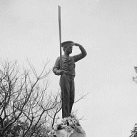
French Pre-Dreadnought Battleship Carnot
Haze Gray replied to dgbot's topic in Nautical/Naval History
Hi Folks, One last picture - more of the hull done. I'll be switching over to the Scratch-build section from here on out, but after the Charles Martel I'll be doing the USS Kathadin (a ram boat!) and then will return here and let you all know if I'm doing the Carnot.... or not.. (I'm too funny). I'm so glad I found a group that can appreciate the pre-dreadnaughts! -
Well got a good part out, saw a few things to change (move the slice point & put in the rear firing ports & the ports for the stern lines). There was a lot of support to remove (extra plastic material deposited to support overhangs) but I’m actually pretty pleased with how the portholes turned out. I added the rudder I printed out previously in one of the pics - fits perfectly. When you print parts that need to interface you have to establish what tolerance your printer can hold reliably. For some interfaces I can go down to 0.05 mm but I usually stick with 0.1mm.
About us
Modelshipworld - Advancing Ship Modeling through Research
SSL Secured
Your security is important for us so this Website is SSL-Secured
NRG Mailing Address
Nautical Research Guild
237 South Lincoln Street
Westmont IL, 60559-1917
Model Ship World ® and the MSW logo are Registered Trademarks, and belong to the Nautical Research Guild (United States Patent and Trademark Office: No. 6,929,264 & No. 6,929,274, registered Dec. 20, 2022)
Helpful Links
About the NRG
If you enjoy building ship models that are historically accurate as well as beautiful, then The Nautical Research Guild (NRG) is just right for you.
The Guild is a non-profit educational organization whose mission is to “Advance Ship Modeling Through Research”. We provide support to our members in their efforts to raise the quality of their model ships.
The Nautical Research Guild has published our world-renowned quarterly magazine, The Nautical Research Journal, since 1955. The pages of the Journal are full of articles by accomplished ship modelers who show you how they create those exquisite details on their models, and by maritime historians who show you the correct details to build. The Journal is available in both print and digital editions. Go to the NRG web site (www.thenrg.org) to download a complimentary digital copy of the Journal. The NRG also publishes plan sets, books and compilations of back issues of the Journal and the former Ships in Scale and Model Ship Builder magazines.

